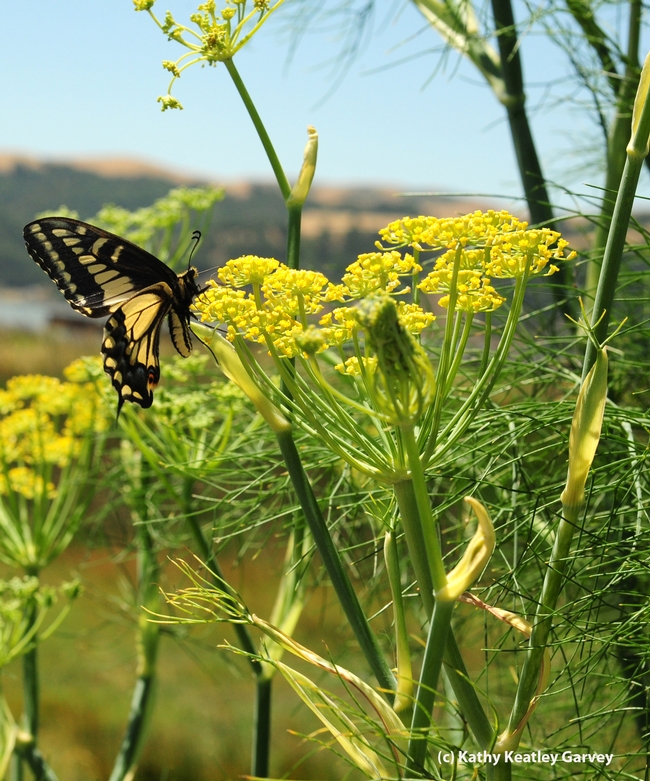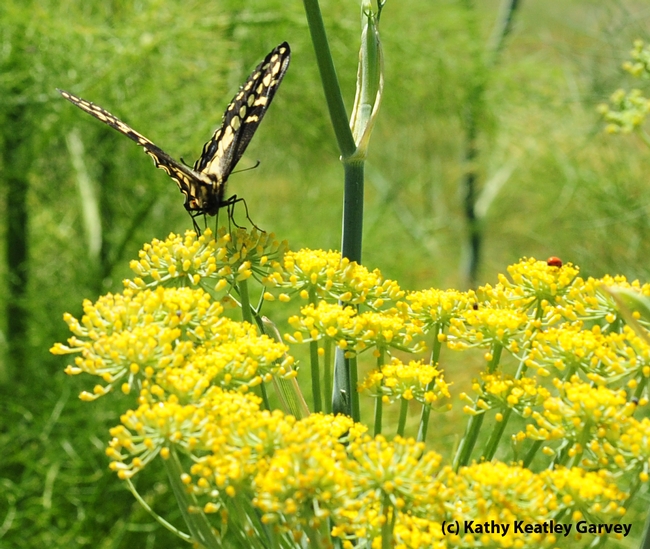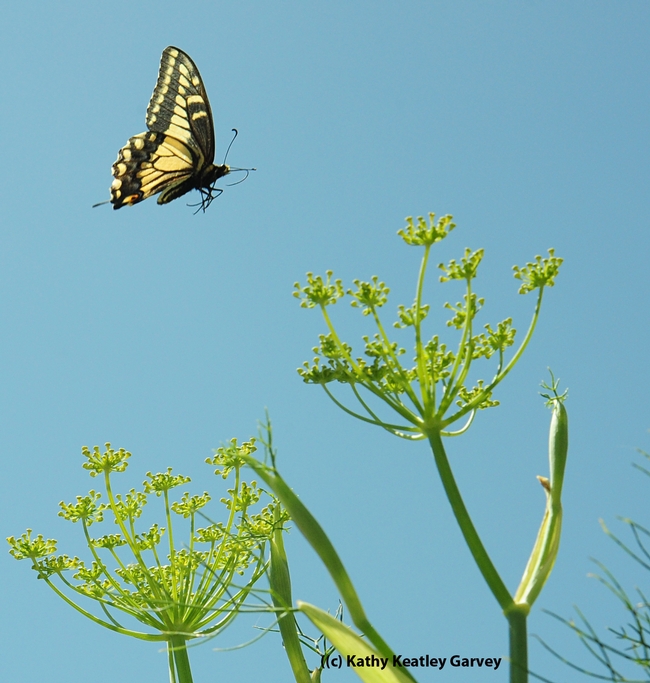An anise swallowtail fluttered in and out of the tall anise bordering the banks of the Benicia Marina.
A beautiful sight.
The female butterfly (Papilio zelicaon), as identified by butterfly expert Arthur Shapiro, professor of evolution and ecology at the University of California, Davis, was probably laying eggs, he told us.
The butterfly is often confused with a Western tiger swallowtail (Papilio rutulus). Their coloring does indeed look similar.
As for the anise butterflies, "they have several generations (late February or March-October) and breed very largely on sweet fennel ("anise"), Foeniculum vulgare, and (in the first half of the season) poison hemlock, Conium maculatum," Shapiro writes on his popular website, Art's Butterfly World. "Both of these are naturalized European weeds."
The larvae of the anise swallowtail use fennel as a food plant. Something else about anise: If you crush the leaves, they smell like licorice.
While we were watching the anise swallowtail, something else was watching her: an European paper wasp.
Wasps eat butterfly eggs.
Attached Images:

Female anise swallowtail,Papilio zelicaon, as identified by butterfly expert Art Shapiro of UC Davis, visiting anise at the Benicia Marina. (Photo by Kathy Keatley Garvey)

A female anise swallowtail,Papilio zelicaon, touches down on anise at the Benicia Marina. (Photo by Kathy Keatley Garvey)

Up and away--the female anise swallowtail flutters away. (Photo by Kathy Keatley Garvey)

European paper wasp, apparently scouting the anise for butterfly eggs. (Photo by Kathy Keatley Garvey)